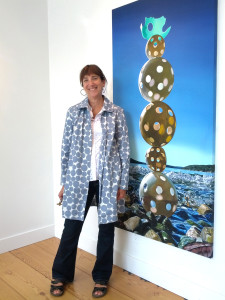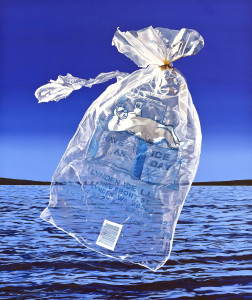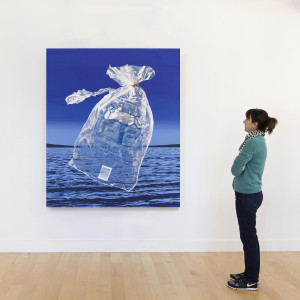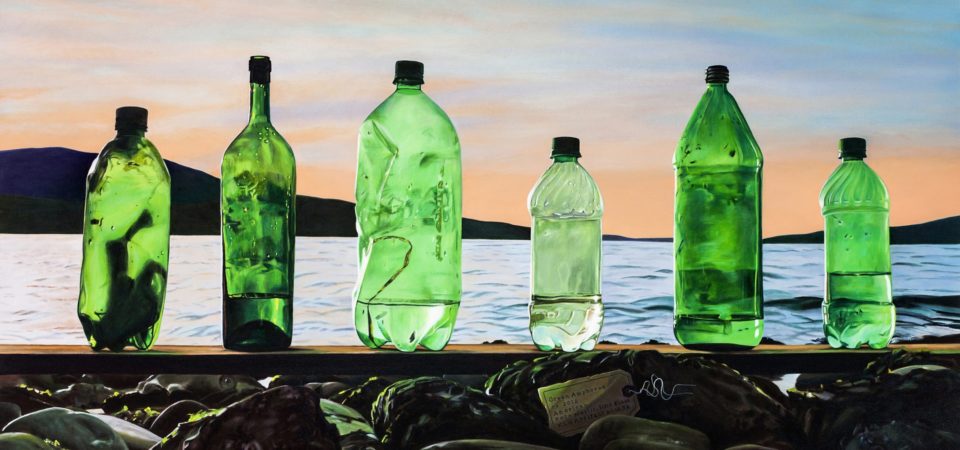Like a raindrop falling on the surface of the ocean, the voice of a single person has the power to effect change, rippling outward to touch and comingle with the many voices of our collective consciousness. Looking back over my life, I remember so many individuals, who through their simple words and small actions have nurtured my awareness of the beautiful intricate balance of the natural world. These mentors helped craft my life’s creative path.
My childhood delight in nature was first instilled in me at my father’s side in the coastal New England farm country where I grew up. When we walked through the pastures and woodlands behind our house, trailing two cats and a dog in our wake between the cows, my dad would point out the little things he enjoyed about the plants and animals around us. He would often pluck a twig from a low hanging beach tree branch, and show me how to peel and chew the bark to savor its fresh minty taste. Following his example, as children do, I became a close observer of the subtle details of the plants and animals of the forests, farms and beaches around our home.
The first Earth Day was not long past when I first began to study painting at Rhode Island School of Design in the mid-1970s, and attended Artists for Environment, a RISD partner program for painting students located in rural western New Jersey. The A.F.E. program focused on the appreciation and conservation of nature through landscape painting. We worked alongside prominent landscape artists of the New York School, such as Paul Resika and Gretna Campbell. Gretna was force; a self-contained and feisty pleine air painter, she lugged her enormous canvases out into the cold winter forest, crunching her way through the heavy snow in a long woolen overcoat. Her sneakered feet were covered in plastic bags to keep them dry, while in her pockets she carried hot foil wrapped potatoes that doubled as hand warmers while she worked and as sustenance at mealtime. I knew Gretna for only a short time, but she became a strong role model for me through her passionate and idiosyncratic pursuit of the beauty in nature, expressed so well in her stunning gestural landscape paintings as well as in her approach to making them. Amongst many things, she showed me that where there is a will there is a way.
“I intend to find out something of the nature of the world through seeing. Or maybe I only intend to prolong my delight in seeing.” – Gretna Campbell, painter of the New York School
Recently, while attending the memorial service for ecological visionary Doug Tompkins in San Francisco, I had the chance to reflect on his influence on the environmental themes in my current artwork. In the late-1980s, when I worked in design under Doug’s direction at ESPRIT’s headquarters, he challenged us daily to consider the consequences of out-of-control “first world” consumer habits. He hosted prominent environmental activists at ESPTIT’s annual Earth Day celebrations, most notably, David Brower, the founder of the Sierra Club, and Dave Forman, the cofounder of the Earth First! organization. Doug’s passion and resolute conviction helped to more firmly ground my ecological roots that were first nurtured by my father.
“We, collectively, just have to be a lot smarter than we have been up to now. Even if the future looks absolutely hopeless, being a hardcore eco-social activist and going down with the ship of Mother Earth will be a dignified way to go. There is nothing better to do anyway, and with no better class of human beings, at least in my view. Caring for all the other creatures on the planet is righteous work. We can be proud of the work right to the bitter end, if it does, in fact, come to that. If someone has a better answer for these existential questions, let me know. It is good to remember, that one is either an activist or an inactivist. Ask yourself what you are in this regard and you might be surprised at the answer!” – Douglas Tompkins, conservationist
Though I am not an environmental activist in the strictest sense of the word, and I paint and craft artworks rising from a primal urge to simply create beauty by making things, I have learned an unshakable habit of noticing. I seek meaning in the world around me, and notice the ironic absurdities in the ways we humans often regard the natural world as merely the resource for our self-gratifying consumer habits, while we ignore the destruction of life and beauty that results from our oblivious rush to purchase the next big thing. As a visual artist, I communicate best through images, and in my wry, elegiac paintings, I bear dark witness and document loss.
“Have fun saving the world or you are just going to depress yourself.” – David Brower, founder of the Sierra Club

In my current painting series, Watershed, I take a light-hearted yet subversive approach to the serious subject of ocean degradation, and present a tongue-in-cheek taxonomy of imaginary post-consumer creatures of the sea. The Watershed paintings are inspired by the incongruity of the man-made detritus found washed up on the otherwise pristine shores near my Discovery Bay, WA studio: the plastic shards and PETE water bottles, plastic bags, the mismatched running shoes, the foggy plastic water bottles, the throw-away lighters, the frayed lengths of nylon rope, the spent shotgun shells, to name but a few. I collect this local flotsam as it bobs in on the waves from far and near, and with my ear to the sand for a close view, I pose and photograph it on the beach where it strands. The resulting seascape compositions depict the beach trash as monolithic, thereby providing a visual metaphor for the overwhelming magnitude of the issue of marine debris. I meticulously paint these seascapes in oil and gouache, lovingly crafting beautiful images of conventionally ugly beach cast-offs, aiming to create a provocative visual juxtaposition of form and idea. My work is influenced by the ideas embodied in Pop Art by artists such as Claes Oldenburg, Ed Ruscha and Andy Warhol, and by the iridescent light found in the paintings of realist still life painter, Janet Fish.
“There is a slow-burn, pre-apocalyptic quality to Karen Hackenberg’s Watershed paintings that calls to mind the fatalistic mood of On the Beach, Nevil Shute’s 1957 doomsday novel about Australians helplessly awaiting the advance of radioactivity spreading from the northern nations who have annihilated one another in nuclear war.” – Jake Seniuk, On the Beach: Karen Hackenberg’s Post-Pop Paintings with Green Heart

In Shades of Green: Amphorae ca. 2012 I depict six discarded plastic and glass bottles posed on a driftwood board in evening winter light. This salty and surreal row of discarded “green” bottles appears to have surfed ashore on ocean waves, escaping intact from an antiquities exhibit case from the future, complete with a trompe l’oeil museum tag lying among the rocks in the foreground. Illustrating the ubiquitous use of the word “green” as “ecological”, as well as “green” as “color”, the painting equates common soda bottles with priceless ancient Greek amphorae, and provokes questions about the impact and value of 21st century consumer culture on future generations.

My large-scale oil painting, Have an Ice Day, 2015 depicts a tattered plastic party-ice bag sporting the cartoonish graphic of a polar bear floating in limbo over the sea. The party-ice in this bag has long since vanished, just as the ice cubes illustrated on the bag are melting out from under the sunglass-clad ice-bear as he poignantly waves good-bye; a parting metaphor for the potential of mass extinction in the warming and disappearing habitats of the globe.
By using subtle ironic beauty and humor in my work, I lure viewers in to take a closer look, aiming to counteract defeatism in the face of the world’s overwhelming ecological crisis, and to bring poignant attention to global extinction as it faces us today.
The work, Shades of Green: Amphorae by Karen Hackenberg featured above was on display in the traveling museum exhibition Environmental Impact, which closed at St. Mary’s College on May 1, 2016. A sequel is scheduled for January 5 to May 26, 2019 at the North Carolina Arboretum in Ashville, NC.

Karen Hackenberg earned her BFA in painting from the Rhode Island School of Design, and settled in the Pacific Northwest in 1992, where she lives and works on the wild coast of Discovery Bay near Port Townsend, WA. Her artwork was recently published in the international magazine, Fresh Paint, curated by Alice Herrick of Herrick Gallery in London, UK, and is currently on tour in the traveling museum exhibition, Environmental Impact. She is one of twenty-three Northwest artists accepted to show their work in the prestigious Northwest Art Now @ TAM 2016 biennial exhibition at the Tacoma Art Museum opening this summer. For this exhibition, TAM chose artists who highlight the intersection of identity, social justice, and the environment.
Hackenberg recently exhibited her Watershed paintings, along with the found beach trash that inspirited it, in her solo exhibition at the Bainbridge Island Museum of Art, as well as in several recent group exhibitions including Neo Naturalists at the Museum of Northwest Art, Stilleven: Contemporary Still Life at Hallie Ford Museum of Art, and the ocean-themed exhibition Beneath the Surface: Rediscovering a World Worth Conserving at the American Association for the Advancement of Science in Washington, DC. Her green sensibility has earned a place for her work in numerous private and permanent public collections including the Washington State Public Art Collection, the New York State Museum, the Bainbridge Island Museum of Art, the Portland Art Museum, and the Hallie Ford Museum of Art. She was awarded a Washington State, Artist Trust GAP grant to turn her Watershed painting series into a limited edition artist book, designed by Lucia | Maquand Editons in Seattle, WA and hand made at Paper Hammer in Tieton, WA.
In addition to painting, Hackenberg currently leads a collaborative team of artists and volunteers to create the Welcome to the Plastisphere project, a site responsive installation offering a beautiful yet disturbing view of imagined sea life gone astray as the result of the magnitude of plastics in our marine environment. Welcome to the Plastisphere has been installed in various locations in the Northwest including the Museum of Northwest Art, and will next be installed in the Washington State Department of Ecology’s LEED® EB Silver Headquarters building in Olympia, WA.
This post is part of the MAHB’s Arts Community space –an open space for MAHB members to share, discuss, and connect with artwork processes and products pushing for change. Please visit the MAHB Arts Community to share and reflect on how art can promote critical changes in behavior and systems and contact Erika with any questions or suggestions you have regarding the new space.
MAHB-UTS Blogs are a joint venture between the University of Technology Sydney and the Millennium Alliance for Humanity and the Biosphere. Questions should be directed to joan@mahbonline.org
MAHB Blog: https://mahb.stanford.edu/blog/unshakeable-habit-noticing/
The views and opinions expressed through the MAHB Website are those of the contributing authors and do not necessarily reflect an official position of the MAHB. The MAHB aims to share a range of perspectives and welcomes the discussions that they prompt.
